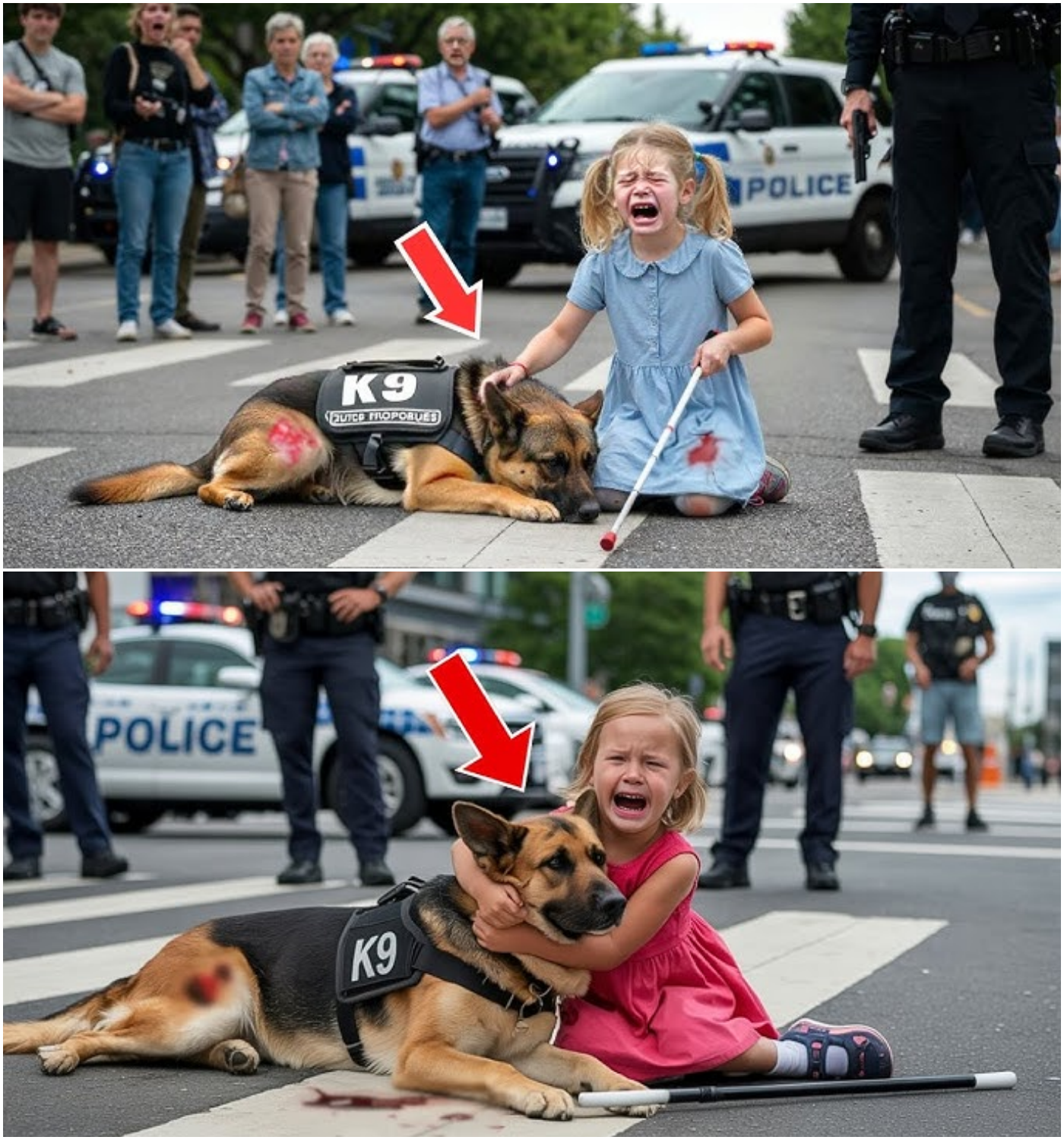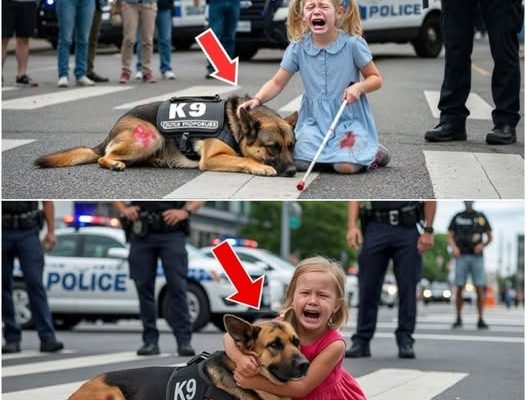One year ago, a six-year-old blind girl named Lily Anderson and her loyal service dog, Maverick, became the center of a national controversy after a Pine Ridge police officer tased them both in a crowded park. The incident, captured by horrified bystanders and quickly going viral online, sparked outrage, soul-searching, and eventually, sweeping legislative change. This week, Lily, now seven, stood at the heart of the U.S. Capitol to witness President sign “Maverick’s Law”—landmark legislation protecting service animals and their handlers.
A Day That Changed Everything
On that spring afternoon, Lily and Maverick were simply crossing the park, as they did every day. But a call to police—later revealed to be a malicious attempt by a rival dog training company to discredit Maverick’s trainer—set off a chain of events that nearly cost Maverick his life. Officer James Wilson, responding to a false report of an “aggressive dog,” deployed his taser without properly assessing the situation. Maverick, a highly-trained former military German Shepherd, collapsed. Lily, reaching for her friend, was also tased.
The aftermath was chaos: a child in shock, a service dog in cardiac arrest, and a community in disbelief. Maverick was rushed to a local veterinary clinic, his life hanging by a thread. The story might have ended in tragedy—if not for a remarkable display of community, courage, and, as it turned out, family.
A Community Rallies—and Secrets Unfold

As Maverick fought for his life, Lily’s mother, Sarah Anderson, refused to give up. She confronted authorities, demanded answers, and uncovered a web of corporate sabotage. The call that led to the tasing was traced to Gregory Payne, director of a rival training center competing for a lucrative government contract. Evidence later revealed a nationwide pattern of sabotage targeting service dogs from competing organizations.
But the drama didn’t end there. The national outcry attracted the attention of Dr. Richard Bennett, director of the National Service Dog Association—who arrived with both critical medication for Maverick and a secret of his own. Dr. Bennett was revealed to be Lily’s estranged grandfather, a retired Army general who had lost touch with his son, Lily’s late father, years before. The crisis brought the family back together, forging a new bond out of old regrets and second chances.
Miracles, Military Help, and Maverick’s Fight
With Pine Ridge cut off by a severe storm and the clinic’s power failing, Bennett called in a favor few could match: a military Blackhawk helicopter arrived to airlift Maverick, Lily, and her family to Andrews Air Force Base. There, military veterinarians worked desperately to save Maverick. At one point, his heart stopped for nearly four minutes. It was Lily’s voice—her pleas for her best friend not to leave her “in the dark”—that seemed to bring Maverick’s heart back to life.
After days in critical care, Maverick pulled through. The story of his recovery and the extraordinary efforts to save him captured national attention. Donations poured in. Lawmakers took notice.
From Tragedy to Triumph: Maverick’s Law
The investigation that followed resulted in federal charges against those responsible for the false report and exposed unethical practices in the service dog industry. Officer Wilson, whose brother worked for the rival company, cooperated fully and became an advocate for better police training after losing his job.
But the greatest impact was legislative. “Maverick’s Law,” passed with bipartisan support, increases penalties for harming service animals, mandates law enforcement training on disability and service animal protocols, and provides new federal funding for service dog programs. It also establishes a national standard for service animal certification.
At the Capitol signing ceremony, Lily and Maverick—now fully recovered—received a standing ovation. Lily, poised and confident, addressed Congress and the President: “Maverick isn’t just a dog to me. He’s my eyes, my independence, and my best friend. He keeps me safe and helps me be brave. When he almost died, I called his name and told him I needed him. The doctor said it was a miracle, but I think it was love.”
A New Family, A New Purpose
The Anderson family has grown in the year since the attack. Dr. Bennett, once a distant figure, is now “Grandpa Rich,” living nearby and helping with Maverick’s ongoing training. Their neighbor, Mr. Jenkins, who witnessed the original incident, remains a steadfast friend. Sarah Anderson, once a military canine trainer herself, now speaks across the country about service dog rights and the power of resilience.
Maverick, who wears a small white patch of fur where the defibrillator paddles burned him, is back at Lily’s side—guiding her to school, to the park, and now, into history. The bond between them is stronger than ever.
A Message of Hope
As Lily’s story spread, families across America shared their own “Maverick moments”—times when love, loyalty, and community overcame the odds. For Sarah, the lesson is clear: “A year ago, I couldn’t imagine any good coming from what happened. Now, we have a new family, a new purpose, and a law that will protect countless others. Sometimes, our deepest pain becomes the beginning of our greatest calling.”
As the sun set over Washington, Lily, Maverick, and their family visited the Lincoln Memorial. “My teacher said it’s about freedom,” Lily told her grandfather, tracing the carved words with her fingers. For a little girl who once feared the world was too big and dark, and for a dog who refused to leave her side, freedom now means something more: the courage to move forward, together, into the light.








